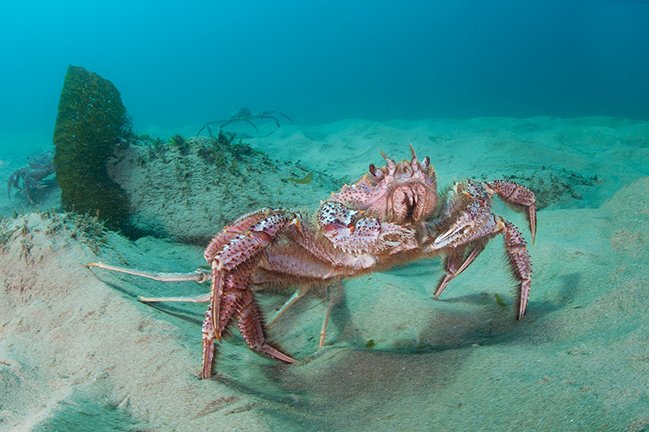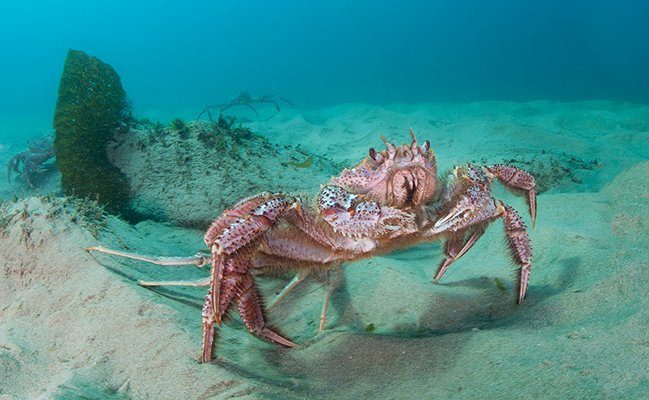
You might be wondering how threats to these crabs affect the broader marine ecosystem. Well, it’s all connected! Just like in a game of Jenga, where removing one block can topple the entire structure, threats to king crabs can impact everything from the food chain to fishing industries. Understanding these threats can help us appreciate and protect not only king crabs but the underwater world they inhabit.
Overfishing: A Silent Predator
One of the biggest threats to king crabs is overfishing. Imagine a group of friends at a buffet where there’s a limited supply of food. If they take more than their fair share, soon there’s nothing left for anyone, and that’s a problem for the crabs. Commercial fishing is often driven by high demand for king crab meat, leading to aggressive harvesting practices. This can result in depleted populations, which not only affects the crabs themselves but also disrupts the entire marine ecosystem.
Fishermen often use large nets that can accidentally trap not only king crabs but also other marine creatures. This bycatch can include juvenile crabs, which are vital for sustaining future populations. When too many juveniles are caught, fewer crabs reach maturity, creating a cycle of decline that can be tough to reverse. The balance of the ocean’s ecosystem is delicate, and overfishing king crabs can lead to unintended consequences that ripple through the food chain.
To combat overfishing, many regions have established fishing quotas and closed seasons. These regulations aim to protect crab populations during breeding periods, ensuring that enough young crabs make it to adulthood. However, enforcement can be challenging, and illegal fishing still occurs. So, it’s important for consumers to be mindful of where their crab comes from and support sustainable fishing practices.
Climate Change: The Rising Tide
Climate change is another major threat to king crabs, and it’s affecting their habitat in significant ways. As ocean temperatures rise, the marine environment changes, which can be detrimental to these crabs. Picture a cozy, warm home that you love. Now imagine that the heating suddenly goes up too high—it becomes unlivable. This is similar to what’s happening in the ocean.
Warmer waters can lead to shifts in the distribution of krill and other food sources that king crabs rely on. If their food moves to cooler areas, the crabs have to adapt, and not all of them can keep up. Additionally, changes in salinity and acidity levels due to melting ice caps and increased carbon dioxide can impact their growth and reproduction. King crabs thrive in specific conditions, and any major shifts can threaten their existence.
Increased storm activity related to climate change is another factor. Storms can disrupt the ocean floor, which is crucial for king crabs who depend on the seabed for shelter and food. The combination of rising temperatures and unpredictable weather patterns makes for a challenging survival landscape for these crabs.
Pollution: A Hidden Hazard
Pollution is another serious threat to king crabs and their habitats. Picture a pristine lake or ocean filled with trash and chemicals. It’s not just unsightly; it’s harmful! Pollutants like plastics, chemicals, and heavy metals can accumulate in the water, making it toxic for marine life. King crabs, like other creatures, can end up ingesting these harmful substances, leading to health problems and diminished populations.
Microplastics have become particularly problematic. These tiny plastic particles can enter the food chain and eventually make their way into the bodies of king crabs. This contamination can affect their growth and reproductive capabilities. Moreover, pollution can lead to algae blooms, which deplete oxygen levels in the water and create dead zones—areas where marine life struggles to survive.
Efforts to reduce pollution, such as cleanup initiatives and stricter regulations on waste disposal, are essential for protecting king crabs. But it also requires collective action from individuals and communities to keep our oceans clean. By reducing plastic use and promoting awareness about pollution, we can help foster a healthier environment for these crabs and countless other marine creatures.
Predation: The Circle of Life
In the wild, king crabs aren’t just facing human-made threats; they also have to deal with natural predators. The ocean is full of hungry mouths, after all! Larger fish, sea otters, and even other crabs can prey on juvenile king crabs, making their early life stages particularly vulnerable. Just as a young plant needs protection to grow strong, these crabs must dodge predators while they’re small and growing.
While predation is a natural part of life in the wild, the balance can be tipped when their populations decline due to other threats, like overfishing or pollution. Fewer young crabs can lead to more predators targeting the remaining individuals, creating a cascade effect that can be hard to reverse. This means protecting juvenile crabs is crucial for maintaining healthy populations in the long run.
It’s important to remember that every species, including king crabs, plays a role in the ecosystem. Healthy predator-prey relationships are vital for marine balance. Understanding what threatens these crabs can help us advocate for efforts to maintain stable populations of both king crabs and their predators.
Habitat Loss: The Vanishing Home
Habitat loss is a growing concern for king crabs. As coastal areas develop and human activities increase, crabs are losing their natural homes. Think about it like this: if you had to move out of your favorite neighborhood because of construction, you’d struggle to find a new place just as cozy. King crabs thrive in specific environments, such as rocky substrates or sandy ocean floors, and when these areas become damaged or destroyed, they face serious challenges in finding food and shelter.
Coastal development can lead to sedimentation and alteration of the sea floor, which can suffocate the habitats king crabs rely on to breed and grow. Additionally, factors like increased boat traffic can lead to greater disturbances in these areas, making it harder for crabs to thrive.
Restoration efforts are crucial. Marine protected areas (MPAs) play a vital role in preserving the habitats where king crabs live. These protected zones allow ecosystems to recover and flourish, offering a safe haven for crabs and other wildlife. Supporting policies that protect these areas can ensure that king crabs have the homes they need to thrive.
King crabs are remarkable creatures that face a myriad of threats in the wild, from overfishing and climate change to pollution and habitat loss. Their survival is not just about them; it reflects the health of our oceans and ecosystems. By understanding these challenges, we can take steps to lessen their impact, whether through supporting sustainable fishing practices, reducing pollution, or advocating for habitat protection.
Everyone can play a part in this conservation effort. Next time you enjoy a meal featuring king crab, think about the journey it took to your plate and the challenges these crabs face. Together, we can ensure that future generations will continue to marvel at the beauty and importance of king crabs in our oceans. It’s about not just preserving a species but keeping our marine ecosystems balanced and vibrant. Remember, every action counts!

